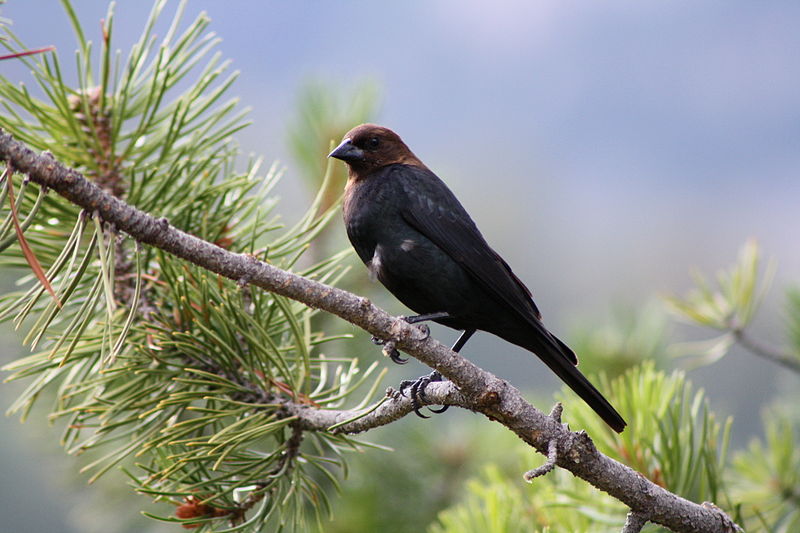Offer
Provide additional details about the offer you're running.
Provide additional details about the offer you're running.
Provide additional details about the offer you're running.

By Katidids via Wikimedia Commons
On the surface, the brown-headed cowbird might look like a common blackbird that can be spotted in large numbers anywhere you can find birds. While this sentiment is somewhat true, it is the odd behaviours and rituals that make this bird unique and one that is often the topic of conversation among birders.
While they can be confused for common grackles and even red-winged blackbirds under certain lighting conditions, their breeding and nesting practices are what truly set them apart from most other birds. Gaining the title of North America’s most common ‘brood parasite’, female brown-headed cowbirds do not build their own nests and do not partake in the incubation or raising of young.
These birds will lay their eggs in the nests of more than 220 species of birds and research has shown that these birds are among the rare non-monogamous species of birds. These birds will often have several different mates in any given breeding season and their eggs are known to hatch much faster than competing species, giving their young an advantage over other species eggs in the nest.
Where to Find the Brown-Headed Cowbird
The short answer? Pretty much anywhere.
These birds spend the summer breeding months in the western United States and southern regions of Canada, while many reside in the continental U.S. on a year-round basis. These ground-feeders can be found in a variety of open-air habitats such as fields, meadows and residential lawns.
Brown-headed cowbirds use these types of environments to fill up on protein-rich insects, aiding females during the spring who spend the majority of their time laying as many eggs as possible.
Identification
Although these birds to closely resemble a number of other blackbird species, they are among the smaller sized blackbirds and are equipped with a very distinctive bill. The short and stout bill paired with the male’s rich brown colouring on the head are perhaps the two most telltale signs of the species.
Females, on the other hand, are made up of mostly pale brown plumage with some finely streaked markings on the belly.
Vocals
A puzzling piece of the brown-headed cowbird that researchers have always attempted to solve in song-learning in young, given the fact these birds have very little to do with raising their young. As one can imagine, without a parent to learn from, it is puzzling to imagine how these birds initially learn their high-pitched gurgle-like song.
High Quality Blend